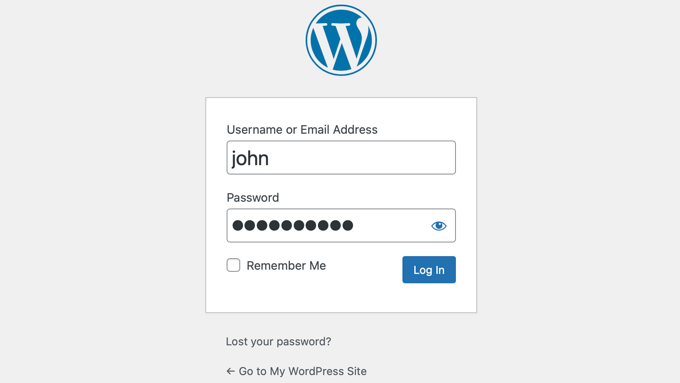Introduction
WordPress is a popular platform for building websites and blogs, but it is also a target for spam and login attempts. In this article, we will discuss several measures you can take to protect your WordPress site from spam and unauthorized login attempts.
It is important to note that the insights provided in this article stem from years of experience and extensive testing on our own sites. The plugins we recommend have earned our trust and are personally utilized by us. Ultimately, the decision to implement any of the suggested features and functions lies with you, as we are merely sharing our experiences and offering our recommendations.
Table Of Contents
- Secure Passwords
- Use Spam Plugin
- Limit Login Attempts
- Disable XML-RPC
- Two-Factor Authentication
- Disable User Registration
- Set the Default Role in WordPress
- Avoid Using Your Username in Posts
- Use reCAPTCHA
- Allow Comments from Registered Users Only
- Prevent Trackbacks and Pingbacks
- Hide WordPress default login URL

Email concept with laptop spam and virus computer monitor internet security concept, businessman reading electronic mail with a laptop. Spam, junk and e-marketing on screen, Spam Email Pop-up Warning.
Secure Passwords
One of the simplest yet most effective ways to protect your WordPress site is by using a strong and secure password. Avoid using common passwords and include a combination of uppercase and lowercase letters, numbers, and special characters. Regularly update your password and avoid reusing it for multiple accounts.
If you have users, please enforce very secure passwords and make sure they change those passwords several times a year.
Use a Spam Plugin
WordPress offers various plugins that can help you combat spam. Install and activate a reliable spam plugin, such as Akismet or CleanTalk, which can automatically filter out spam comments and trackbacks. Cleantalk also works with internal or external forms and much more. This is what 360 Web Firm uses.
Limit Login Attempts
By default, WordPress allows unlimited login attempts, making it easier for hackers to guess your password through brute force attacks. To prevent this, you can use a plugin like Login Lockdown, which limits the number of login attempts from a specific IP address within a certain time period. A great plugin is Limit Login Attempts Reloaded.
Disable XML-RPC
XML-RPC is a remote procedure call protocol that allows external applications to interact with your WordPress site. However, it can also be exploited by hackers to launch brute force attacks. Disable XML-RPC by adding the following code to your site’s .htaccess file:
# Block WordPress xmlrpc.php requests
<Files xmlrpc.php>
order deny,allow
deny from all
allow from xxx.xxx.xxx.xxx
</Files>
This code snippet above blocks all XML-RPC requests in WordPress apart from the IP addresses mentioned in the line that starts with “allow from.” If you wish to block requests from everyone, you much delete this line entirely.
You can also use plugins such as: Disable XML-RPC wordpress plugin OR Really Simple SSL wordpress plugin which also has a feature to disable this.
The outdated xmlrpc.php file still comes with every WordPress installation, you should disable it because it adds security vulnerabilities to your site.
Two-Factor Authentication
Implementing two-factor authentication adds an extra layer of security to your WordPress login process. This requires users to provide two forms of identification, typically a password and a unique verification code sent to their mobile device or email address. You can use plugins like Google Authenticator or Authy to enable two-factor authentication for your WordPress site.
Disable User Registration
If you do not require user registration on your WordPress site, it is recommended to disable it. This prevents potential spammers from creating accounts and posting spam content. To disable user registration, go to the Settings > General page in your WordPress dashboard and uncheck the “Anyone can register” option.
Set the Default Role in WordPress
By default, WordPress assigns the “Subscriber” role to new users. However, you can change the default role to a higher level, such as “Contributor” or “Author,” which have fewer privileges. This helps prevent unauthorized users from gaining access to sensitive areas of your site.
Avoid Using Your Username in Posts
When publishing content on your WordPress site, avoid using your username as the author name. This can make it easier for hackers to identify your username and target your site. Instead, use a display name or a pseudonym.
Use reCAPTCHA
reCAPTCHA is a widely-used system that helps prevent spam and automated bots from submitting forms on your website. Install a reCAPTCHA plugin, such as Google reCAPTCHA, and enable it for your WordPress site’s comment forms and login page.
Allow Comments from Registered Users Only
To reduce spam comments, consider allowing comments only from registered users. This ensures that only authenticated users can leave comments on your WordPress site. You can enable this option by going to the Settings > Discussion page in your WordPress dashboard and checking the “Users must be registered and logged in to comment” option.
Prevent Trackbacks and Pingbacks
Trackbacks and pingbacks are features in WordPress that allow other blogs to notify you when they link to your content. However, they can also be exploited by spammers to flood your site with irrelevant notifications. Disable trackbacks and pingbacks by going to the Settings > Discussion page and unchecking the “Allow link notifications from other blogs (pingbacks and trackbacks)” option.
Hide WordPress default login URL
A great way to increase the security and prevent login attemps is to change the default WordPress login address. Examples are: wp-admin or wp-login.php. There is a plugin 360 Web Firm uses for this and it hides these logins and you can set the custom login for your WordPress site. WPS Hide Login wordpress plugin is a trusted WordPress plugin for this.
What is Wp Hide Login?
Wp Hide Login is a WordPress plugin that allows you to change the default login URL to a custom one of your choice. By doing so, it adds an extra layer of security to your website by preventing unauthorized access to the login page.
Conclusion
Protecting your WordPress site from spam and unauthorized login attempts is crucial for maintaining its security and integrity. By implementing the measures mentioned in this article, you can significantly reduce the risk of spam and enhance the overall security of your WordPress site.
Looking for a site audit for security or have questions? Contact 360 Web Firm anytime.

